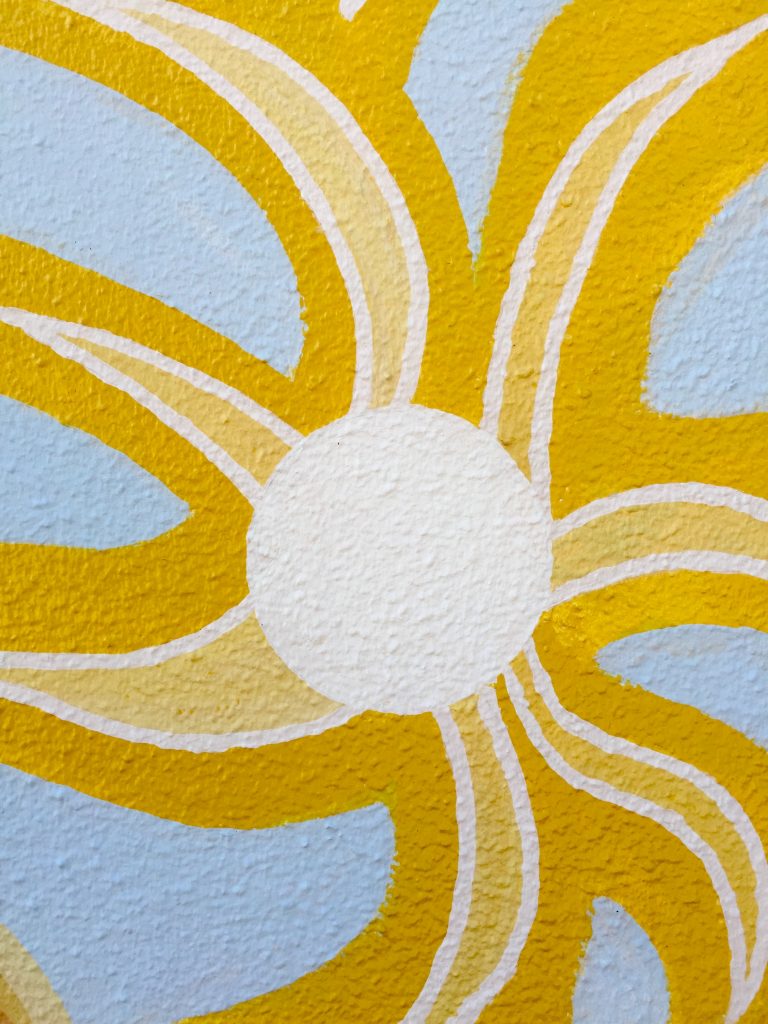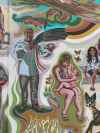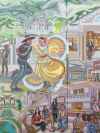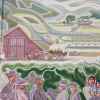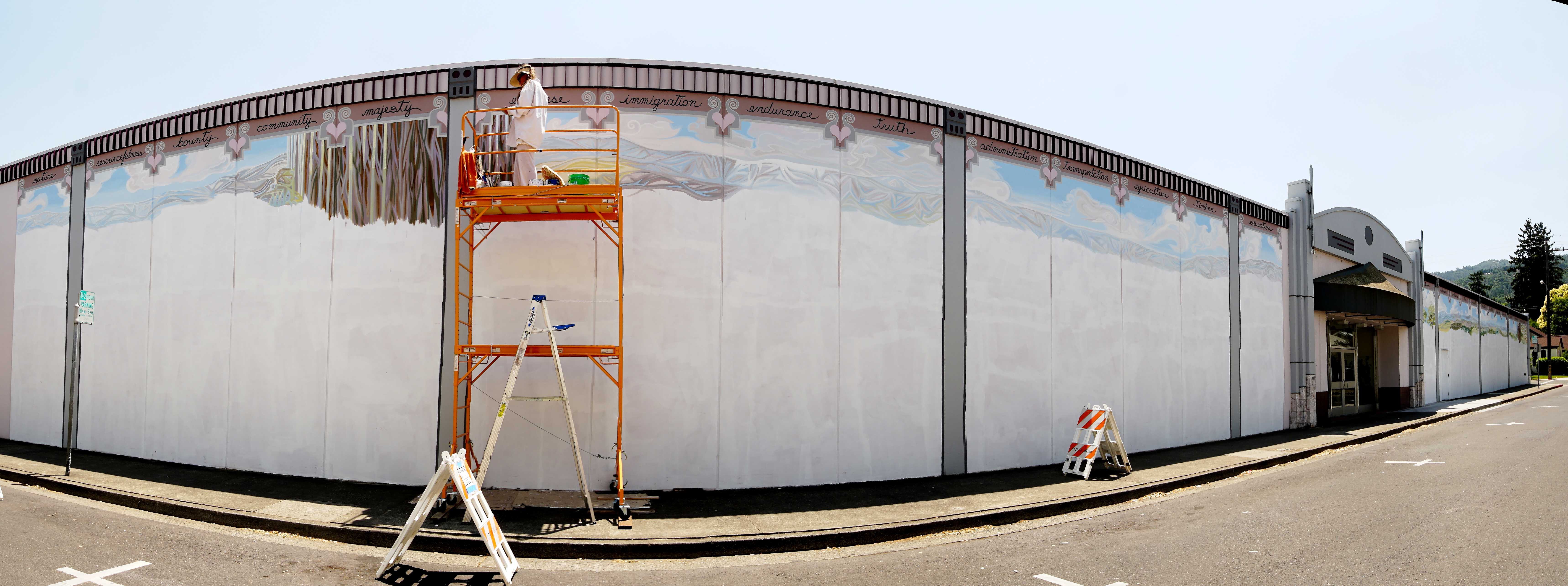

There are 26 panels each with multiple scenes united by a continuous landscape and sky.


This mural is located in the middle of busy downtown Ukiah and it generated news coverage from the start.
Scroll below to quickly see each entire section in one image.

by Lauren Sinnott
www.artgoddess.com
This is the “sign” about the mural painted directly on the wall
Ukiah adopted a Public Art Policy in 2016 to create a process for the city to acquire or receive public art. A stated goal of the policy is to promote art that creates a unique sense of place and communicates a strong civic identity for the city.
Then an arts committee and members of the public established desired themes for this project:
- Pride in our unique and diverse community
- Ukiah’s characteristic landscape of agriculture and beautiful natural scenery
- A positive sense of the future

As the county seat, Ukiah represents a wider community than just those who live within city limits. Many of us who live elsewhere come here to work, shop, and visit. The mural represents this bigger Mendocino family seen through the lens of the Ukiah Valley.
This huge wall was perfect for my idea of visual story-telling, a depiction of the region’s past and present, with an expression of our hopes and dreams for the future. The wall is split into vertical panels, a layout that lends itself to a chronological march of history. Each panel represents an essential chapter in our story, told through multiple scenes woven together like a tapestry.
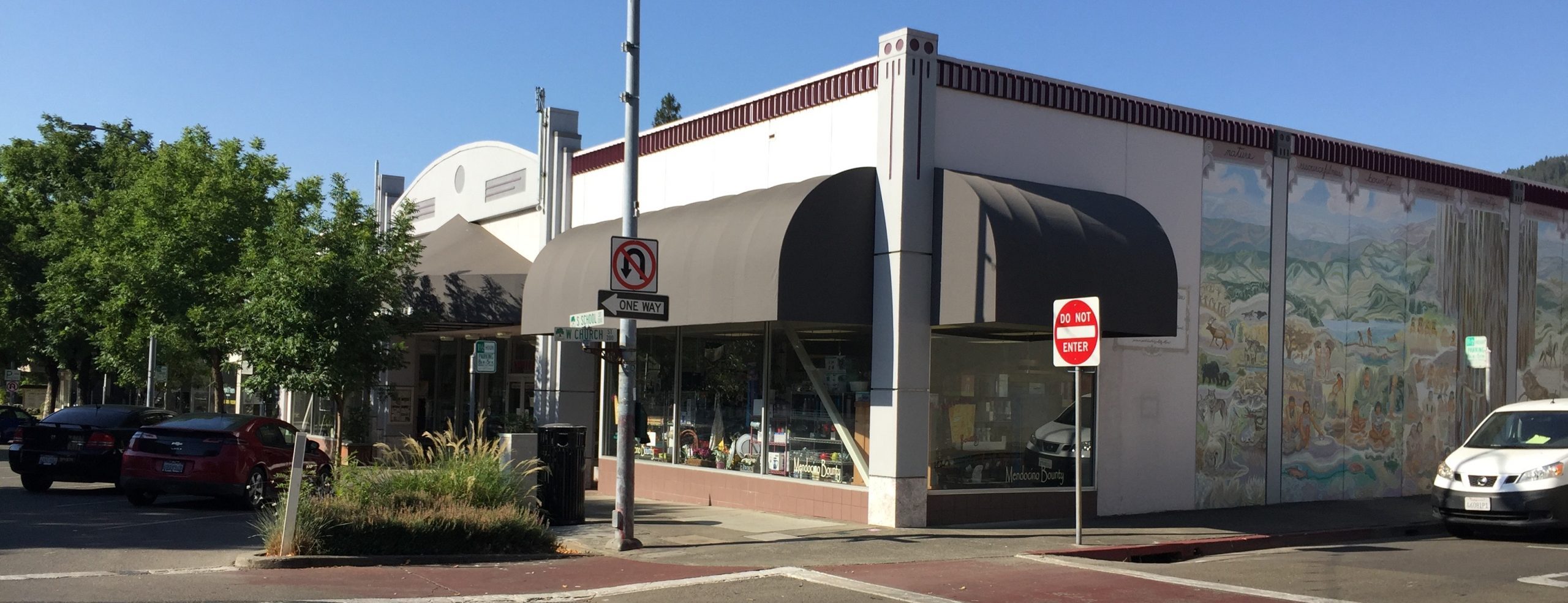
At the top of each panel I painted an architectural element containing one word. These words relate to that panel, as well as to other parts of the narrative.
The stage for each panel is the beautiful landscape which connects behind the separate vignettes.
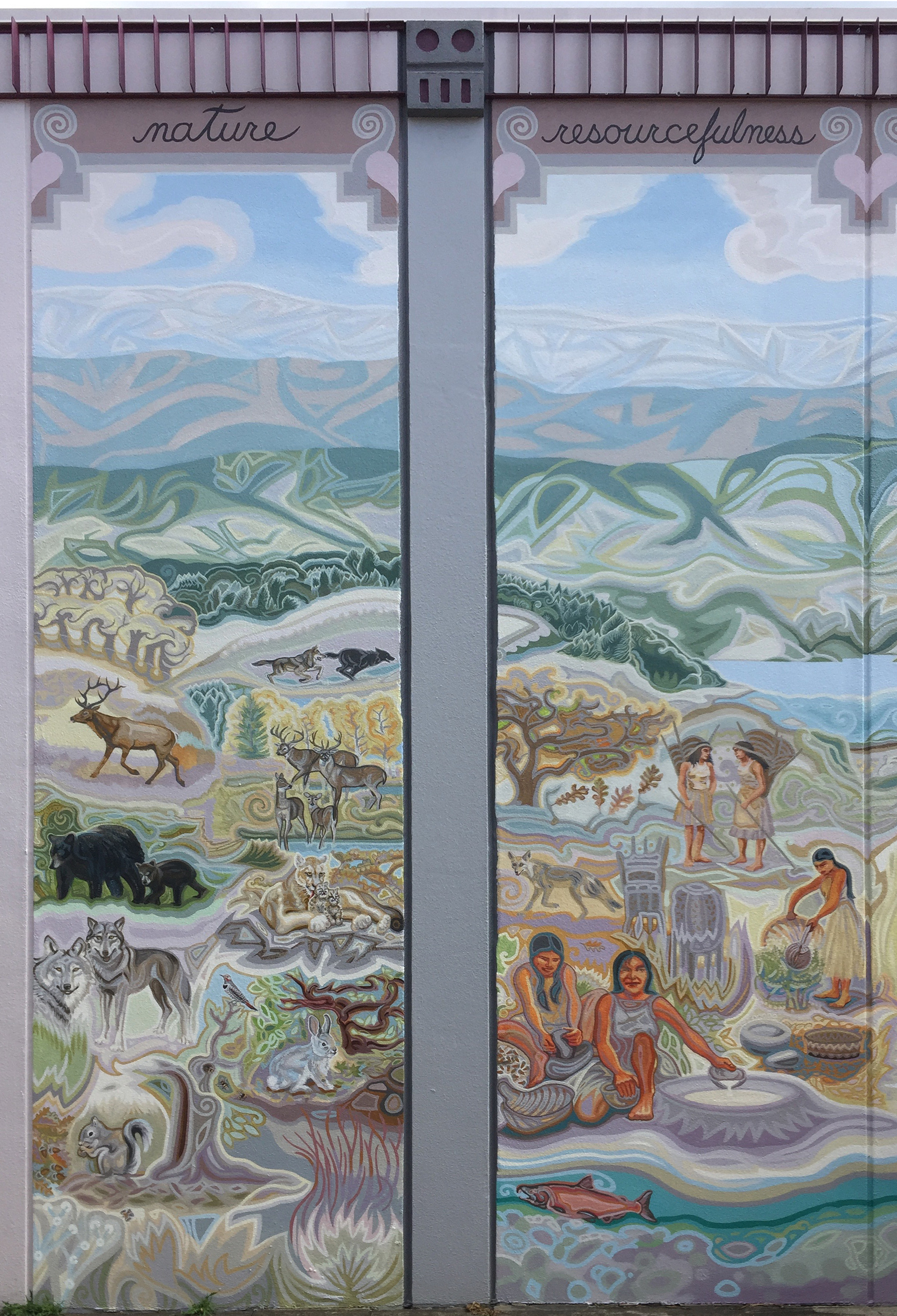
East half of the mural
SECTION ONE
The first panel depicts the natural world that existed here for millions of years before humans arrived in North America. It is an autumn landscape painted in gold tones that transition smoothly from the colors of the building.
Our hemisphere was a rich and diverse environment for many millennia, only inhabited by humans late in the game.* This panel shows that abundance of native flora and fauna.
*Humans crossed the Bering Strait into North America probably about 15,000 years ago. By contrast, humans evolved in Africa by 200,000 years ago and began moving into Asia and Europe by about 60,000 years ago.

The next four panels represent the indigenous tribes and life in their “deep or southern valley,” giving us the word Yokaya (subsequently “Yokayo”) and the contemporary name Ukiah. Native people flourished here for more than 10,000 years, developing a sustainable and efficient lifestyle.
In fact, what we call California was a vast land whose natural bounty lent itself to the management techniques of its human inhabitants, giving rise to a large native population of about 300,000. California was possibly the most densely populated region north of Mexico in the years before Columbus arrived in the Western Hemisphere.
SECTION TWO
These panels represent our region as it changed drastically during the 1800s with colonization by Spain, then Mexico, and mass immigration after it became part of the United States.

Spanish and Mexican colonization of this land is represented by the vaquero in expanse, with a jagged line expressing the rupture experienced by the people who already lived here. The Gold Rush and the United States’ claim to California brought immigration. The unimaginable decimation of the Native population and their strength in the face of it are represented in endurance and truth.
SECTION THREE
It begins with administration, as California became a state and Ukiah became the county seat. The blood-stained documents below our beautiful courthouse show political achievements and betrayals.

Between 1850 and 1910, Mendocino County and the Ukiah Valley saw the growth of government in the administration panel, the expansion of transportation, burgeoning agriculture and a massive timber industry based on the majestic redwood. The extra fifth panel at the right represents education in its many forms.
The Conference Center entrance splits the wall and mural in half. I used this division of the panels to also unite them by flanking the entrance with two pillars of society: education and labor.
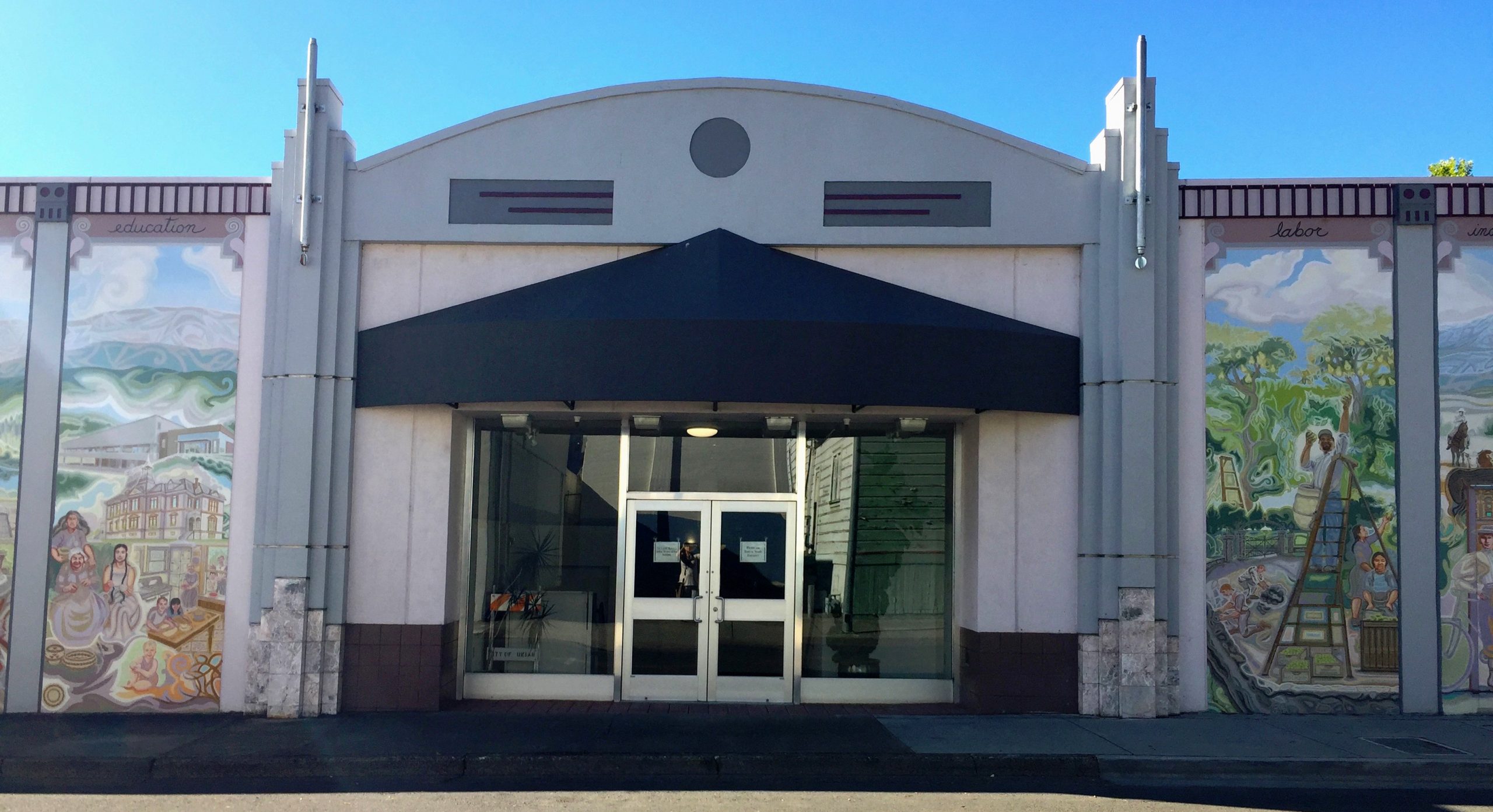
West half of the mural
SECTION FOUR

Here is the important subject of labor, as well as the ranching lifestyle and women’s fight for the vote in independence, with suffragists walking through a real door. Wine-making is featured in excellence, and the marijuana economy beginning with the back-to-the-land movement of the sixties in the love panel. Creativity features SPACE theater (which is the beloved building originally housing St. Mary of the Angels Catholic Church), creative dancers (all portraits), local musicians and – in the Renaissance tradition – my depiction of myself painting the painting in the painting. (not a typo!)
SECTION FOUR

The panels representing heritage, hospitality, manufacturing and innovation move us into modern times.
SECTION SIX

Because the final panel of SECTION SIX is double width, the final section of the mural has only three subjects – service, remembrance, and our future together, but the last panel alone has 44 portraits!
